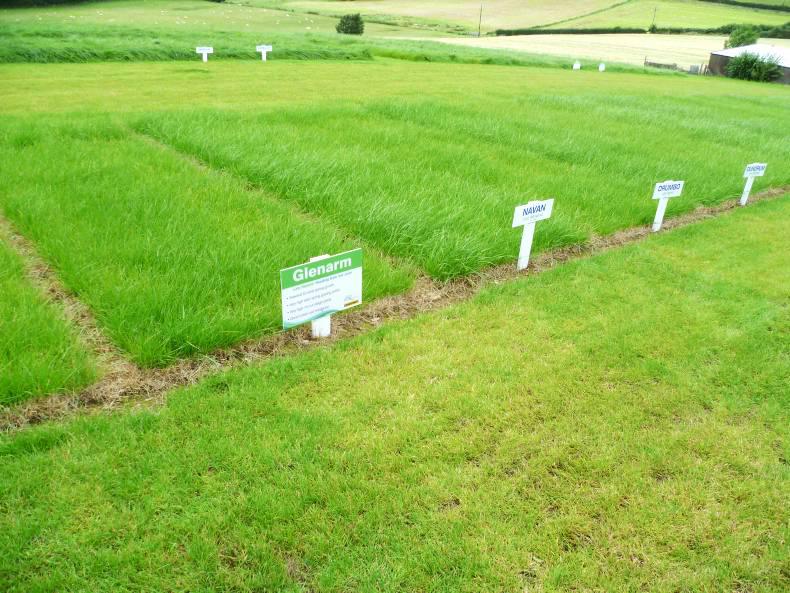With the AFBI plant testing station at Crossnacreevy to close by 2019, it is prompting a rethink as how best to assess new grass varieties.
The standard approach has been to assess new varieties in small plots, with a high level of fertiliser applied, and frequent cutting to mimic silage or grazing. The quality of the grass is assessed by measuring digestibility. However, highly digestible material might not always be palatable to livestock.
“These manicured plots are fine for me as a grass breeder. But what happens when a slurry tanker crosses the field, or the grass is trampled by heavy cows, and can it survive urine scorch? We need to assess under a management system close to a farm,” said Dr David Johnston, from AFBI Loughgall. He was speaking at an event at Loughall last week for local seed merchants and in association with their commercial grass seed partner, Barenburg.
As a starting point, AFBI now has a seven-acre field at Loughgall sowed out with seven different grass varieties and managed under more practical farming conditions. Ultimately, Johnston would like to see grass variety testing (currently done at Crossnacreevy) undertaken across a number of farms in NI.
His focus has probably also slightly changed in recent years towards developing grass varieties that can deliver good first, second- and third-cut silage yields, and exhibit strong growth throughout the summer. Strong early- and late-season growth remains important (and receives a strong weighting in the pasture profit index), but in NI, weather and ground conditions can limit the opportunities.
He also believes that disease resistance will become more of an issue, with crown rust (identified by orange spores on the leaf) spreading throughout England, and also seen in eastern parts of NI during warm and moist weather. The disease reduces palatability and also yield.
Also leaf spot (identified by black speckles on the leaf) has been seen in the west and will limit palatability and yield. Both diseases become more apparent when fertiliser usage is reduced.
In terms of new AFBI varieties coming to market, Fintona, an intermediate tetraploid and a replacement for Malone, has good sward density and produces high silage yields.
Moira, an intermediate diploid has replaced Spelga, and also offers high silage yields. Coming in 2017 is Glenarm, a late diploid with high-disease resistance, and good first-cut and spring grazing yields.
According to Johnston, plant breeding alone is delivering a 0.3% to 0.5% yield improvement every year.
Clover breeding
Advances are also being made in clover breeding, with new varieties showing more even growth throughout the season.
A grass clover sward might not be able to deliver top-end yields of 12t DM/ha to 14t DM/ha, given that this level of growth is driven on by high fertiliser inputs.
But Johnston believes that clover still has an important role in lower input systems, and in particular, on beef and sheep farms, given its ability to fix nitrogen.
Grass seed company Barenburg has developed a guide to help farmers and merchants assess swards, and determine what action might be required.
“We are encouraging farmers to start looking down and measuring what you actually have,” said David Linton from Barenburg.
The assessment is split into five, with a field rated as index 1 requiring ploughing out and reseeding. This field has less than 25% productive species, and is dominated by broad leaved weeds, and weed grasses such as annual meadowgrass and yorkshire fog.
A field at index 2 has less than 40% productive grasses and an open sward. Options are either a full reseed, or stitching in some new grass varieties.
For an index 3 sward, productive grasses are around 50% to 60%. Overseeding will help to extend the productive life of the sward.
Finally, on good quality swards (index 4 and 5), the aim is to soil test regularly and ensure that nutrient requirements are being met.






 This is a subscriber-only article
This is a subscriber-only article











SHARING OPTIONS: